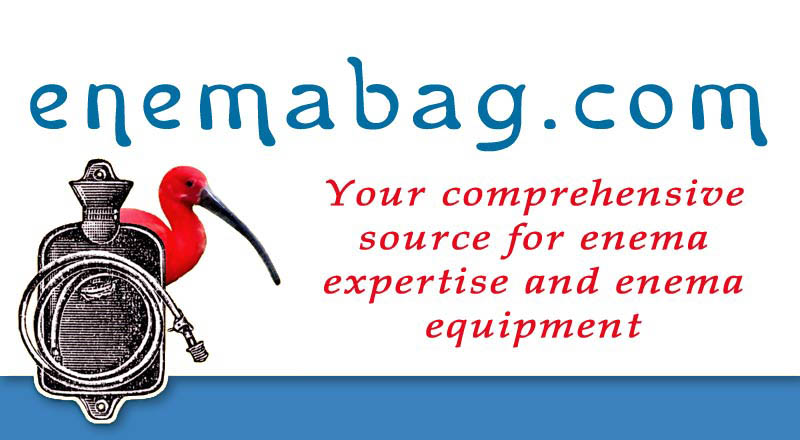Enema Equipment
Safe enema equipment can be purchased on our product website.
The enema nozzle, because it is inserted into the colon, is a key component in keeping your enema safe. The enema nozzle should be gently inserted into the rectum, pointing toward the belly button. Be sure that the nozzle is well lubricated with a viscous and nutritious lubricant.
Once the tip is inserted, gently release the hose clamp to allow the enema solution to flow into the colon.
There are many enema bags and enema nozzles available that are latex-free. Some of the latex-free enema equipment is made of silicone and some is made of plastic or vinyl. You can also purchase latex-free gloves.
Please note that most people are not latex-sensitive and do just fine with latex enema equipment.
An excellent protocol to use in cleaning your enema equipment is to first wash your equipment with Dr. Bonner’s Castile Soap and then to soak your enema equipment in grapefruit seed extract.
Grapefruit seed extract (GSE) is a natural compound synthesized from the seed and pulp of certified organically grown grapefruit. The manufacturing process converts grapefruit bioflavonoid (polyphenolics) into an extremely potent compound that has been proven to be antibacterial and antifungal. It is safe, effective (unlike most antibacterial cleaners), and used by healthcare professionals worldwide.
Open-topped enema bags, enema bags that are clear, and enema cans are the easiest to clean.
After you have thoroughly washed, soaked, and towel-dried your equipment, hang your enema bag in a well-ventilated location to dry for a day or two. This will allow the enema bag to fully air out to avoid mold growth.
By following these enema equipment guidelines, you will experience a safe enema.
ENEMA BAGS AND ENEMA NOZZLES. Much of the enema equipment that is used in homes for colon cleansing is made out of latex (rubber). This latex comes from the rubber tree (Hevea brasiliensis). Most hospitals have switched from latex enema equipment to plastic, vinyl, and silicone enema equipment because some patients have severe latex sensitivities.
LEARN MORE:
Fatal Hypersensitivity Reaction During a Barium Enema
Additionally, health care workers can have, or develop with use, a sensitivity to latex.
In 1992, the Food and Drug Administration and the Centers for Disease Control sponsored a conference entitled International Latex Conference: Sensitivity to Latex in Medical Devices.
The focus of the conference was that "reports of allergic reactions to latex devices such as surgical gloves and catheters have increased in recent years. These reactions occur in latex-sensitive people and appear to result from numerous exposures to latex proteins that are natural elements of the rubber. The reactions range from minor skin irritation to anaphylactic shock that can lead to death."
LEARN MORE:
Mayo Clinic’s Overview on Latex Allergies
One area of concern that is not well-researched is the health effects of latex use with people who have multiple chemical sensitivities. Chemically sensitive people tend to do better if they avoid latex enema equipment.
Some chemically sensitive people need to avoid plastic enema equipment also. Silicone enema equipment is most likely preferred for the chemically sensitive person.
For assistance in overcoming multiple chemical sensitivities, please contact the Optimal Health Network.
GLOVES. There are many different brands of gloves available that are made of latex. Additionally, many gloves that can be used to take or give an enema are powdered. This cornstarch powder can cause allergic reactions and is associated with latex sensitivities.
CLEANING YOUR ENEMA BAG. Time and again, I work with people who do not take proper care of their enema equipment. If you clean your enema bag with a toxic cleaner, you can get sick by using your enema bag.
Most cleansing agents that people tend to use, like bleach, rubbing alcohol, and commercial soaps, are toxic; their residue often stays on the enema equipment and ends up in your body.
Additionally, many cleaners are not anti-fungal. You need to clean your enema equipment with an anti-fungal compound in order to avoid mold inside of your enema bag. Not properly drying your enema equipment can also cause mold to grow inside of it. Mold from your enema equipment can cause you to get sick.




